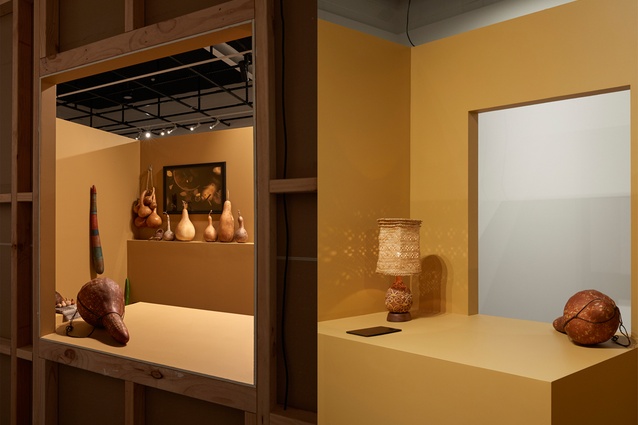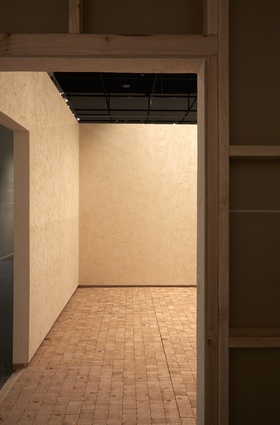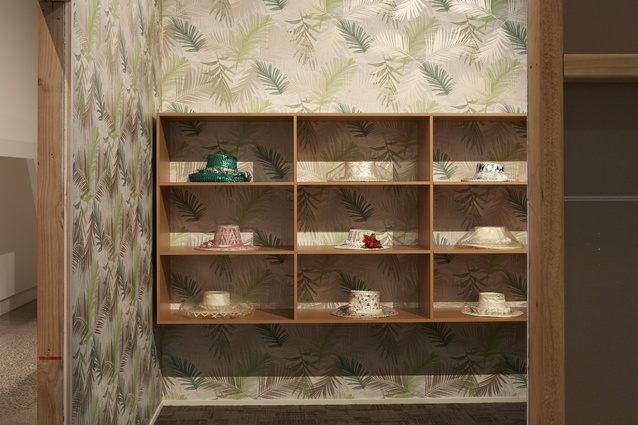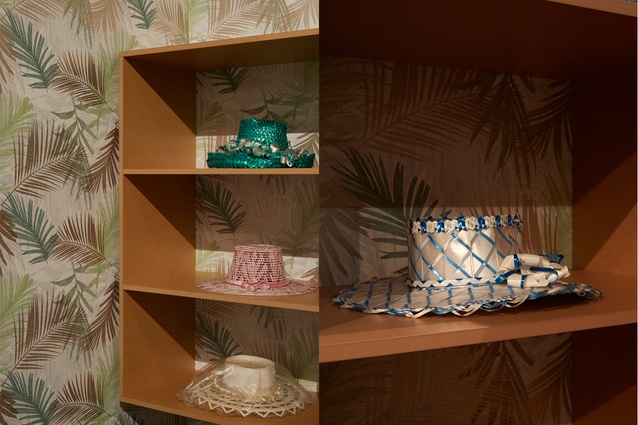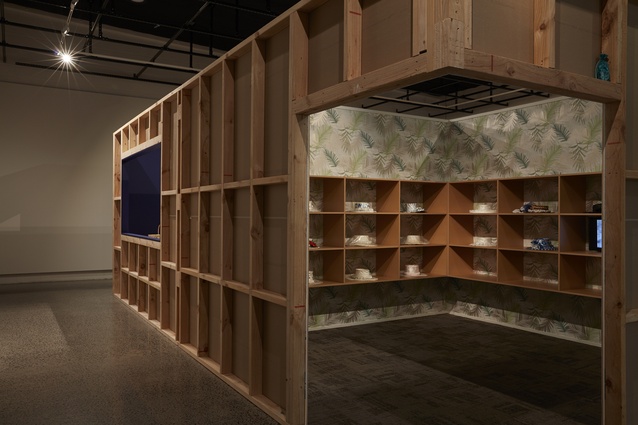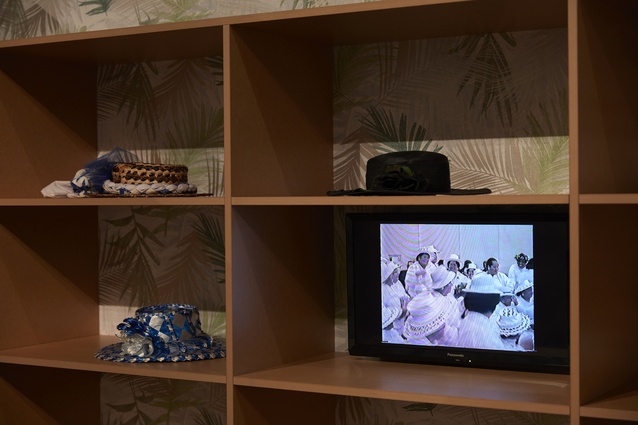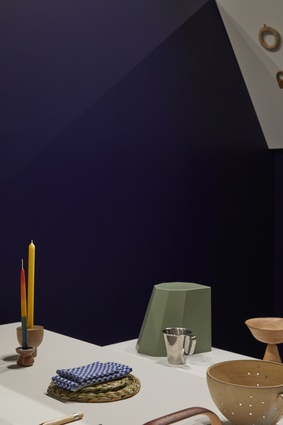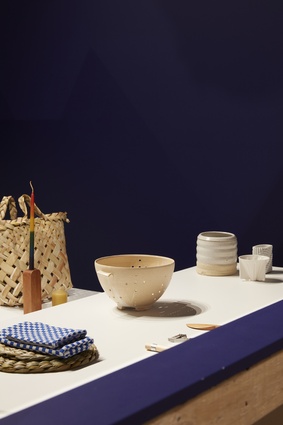Review: The Room at Objectspace
Federico Monsalve notes that Objectspace's new exhibition The Room is a wide-ranging tour de force on residential design, seen through an array of unique lenses.
Residential interior design inhabits two main spheres: the private family space and its more-public consumer arena made up of showrooms, glossy magazines, social media posts and trade fair installations. There are, however, a few rare instances when the profession is transplanted into museums or galleries and lifted onto the ivory plinth of the art context for punters to survey its minutia through a different lens.
‘Products’ can suddenly be viewed as ‘artefacts’ full of cultural, economic and historic relevance, which help paint a picture of an era, a nationality or more individualistic landscapes. Materials, colours and shapes that are often bundled into fleeting ‘trends’ or status symbols can be scrutinised for ‘urban tribe’ affiliation, historic provenance or even as litmus tests for sustainability practices.
By swapping the ‘for sale’ sign for a museum label, items burdened by consumer values are suddenly judged by their proximity to the great blurry divide that separates art and craft from mass production and ‘money making’.
It is here, in that rare contextual transplant, that The Room – Objectspace’s most recent exhibition – succeeds.
This from the organisers: “The Room is a large-scale installation of four environments that brings together New Zealand’s leading design thinkers. Award-winning interior designer Rufus Knight, Te Papa curator of decorative art and design Justine Olsen, design critic and researcher Emma Ng, and artist and curator Ane Tonga… shape a series of constructed rooms within the gallery – each with its own story to tell.”
By giving this impressive troupe a chance to explore aspects of residential design from within a new context, the exhibition arrives at conclusions that industrial, interior, architecture and construction as a whole would most likely not have been able to reach from within the confines of their own silos.
Highlights
The main space is a room within a room. Its form is simple: a square timber building – utilitarian, raw and seemingly unfinished – sitting within the main gallery space. The outside shell of this interior within an interior is marked with all manner of pencil scratchings (perhaps measurements?) and red marker lashings (perhaps instructions?) that, most likely, meant something practical to someone, at some stage, during the installation of this structure.
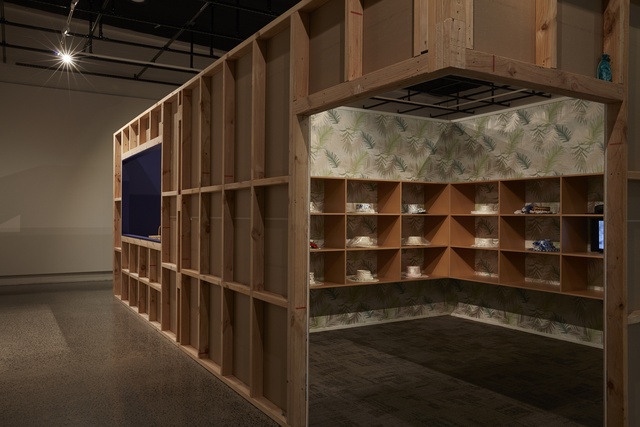
In and around the surface of this carapace are also electrical cables, joints and frames. All of them are exposed, as if it had been intended as a quickly built, temporary dwelling or a room ripped – with a certain degree of conceptual violence – from the entrails of ‘architecture’ (yes, there are some undertones of Gordon Matta-Clark at play here).
Yet, it is not only these pencil or ink markings, nor just the studs and joists, that carry within them messages about ‘interiors without architecture’ and the subdivision of space into smaller shelters. Inside The Room are four spaces and an equal number of installations exploring what turns a basic construction from a house’s interior into a ‘home’.
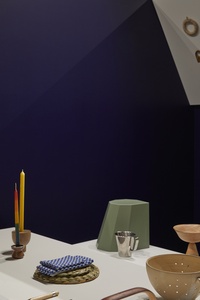
Two personal highlights included: Rufus Knight and Mijntje Lepoutre’s Untitled (Presque Rien) and Ani O’Neill’s Promise Me / Trust Me (curated by Ane Tonga).
The former is a meditation on materiality defined by restrain, both of its theme as well as its conclusion. By making this room entirely of waste materials from the construction of the entire carapace, Presque Rien – meaning ‘almost nothing’ – poses an interesting question about waste in the construction industry and answers it with deft minimalism and thematic eloquence.
This is a meditative space, one that instills and requires silence, stillness and patience to decipher the myriad of detail that might go amiss to a more rushed observer. The textural quality of the walls speak of the handmade rather than the mass-made: its sporadic and random woodchips create a soothing tactility that testify to the human craft that went into their making, and serve as a connection to that process. The walls don’t meet the floor, levitating, instead, a few centimetres away from it. In doing so, they create a negative space in the otherwise monochromatic, light-coloured expanse. The floors are scared by circular saw marks and offer the sort of rewarding underfoot squeak of interiors older than this.
On a seemingly opposite end of the visual and thematic spectrum is Ani O’Neill and Ane Tonga’s Promise Me / Trust Me installation. A darkly carpeted room has been wallpapered with a floral motif (palm fronds in dark and light green, brown, grey-white and graduated golden). Along the walls are rows of simple cabinets into which hats have been placed. These items are intricately woven from floristry ribbons and are traditionally worn by Rarotongan women during church services, among other special occasions.
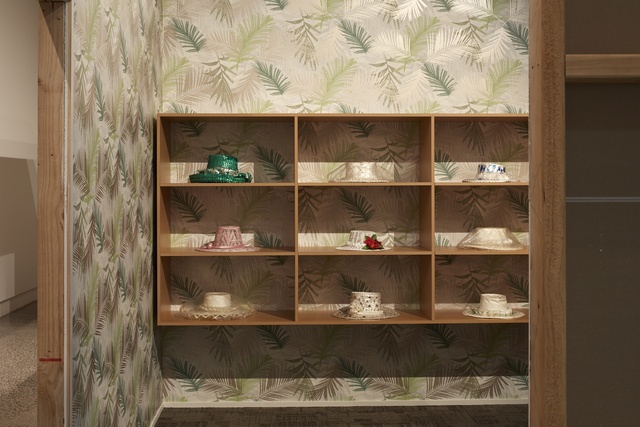
There is a solemnity at play but, when these hats are at danger of reminding us too much of those not present to occupy them, one can hear a nearby video of a congregation. The looping, lo-fi, handheld recording moves around a group of mostly women, all of whom are singing happily in church and wearing hats akin to those on the walls. Their syncopated call and responses are punctuated by laughter and theatrics, and their body language is replete with a soulful warmth that is as enveloping as it is generous. This room is also infused with the scent that O’Neill’s grandmother wears, adding yet another sensory marker for remembrance.
Despite this installation being a personable, warm homage, there is also a subtle, slightly more sobering reminder of the fragility of life and the transient nature of human interactions. We see the empty hats and the grainy video both as a celebration and as a pointing out of the absence of the hats’ wearers.
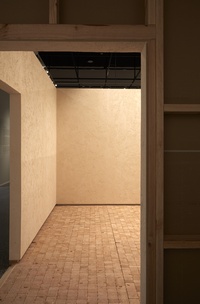
Beside the emotiveness of this space, there is also another potential reading at play here: one of gentrification.
Promise Me / Trust Me re-imagines the New Zealand home interior of a Pacific Island family (a la Edith Amituanai) within an art gallery in Ponsonby; a neighbourhood that, by and large, has shed the Pacific islander demographic it enjoyed in former decades.
There is much more to be gathered from The Room. Justine Olsen and Karl Fritsch’s The Poet’s Room, Te Whare Toikupu is a cerebral sonnet for gourds and possum furs. Emma Ng’s The Edit is an inherently meta discussion about the museification of consumer homewares.
The Room is an exceptional tour de force, a wide-ranging and much-needed personification of what it means to create a home, and of the emotional and intellectual power of the objects we choose to surround ourselves with.
The Room will run at Objectspace until May 19. objectspace.org.nz

